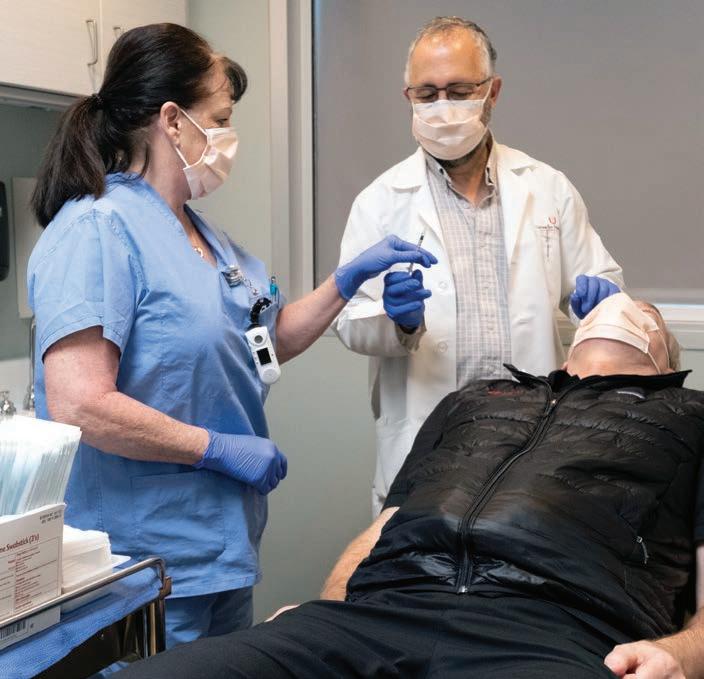
3 minute read
When the World Paused, Moran Didn’t
Amid the pandemic shutdown, Moran physicians found safe ways to continue providing urgent care and understanding for patients in danger of losing sight.
Every four weeks for the past decade, 80-year-old Kay Lipman has traveled from her home in Ogden to the Moran Eye Center’s University of Utah campus location to receive sight-preserving injections for her age-related macular degeneration (AMD).
When the COVID-19 pandemic hit, Lipman worried about her health. She was at a higher risk for COVID-19 due to her age, but she also knew AMD could rapidly blind her if left unchecked. Would her treatments be interrupted? If not, what types of safety precautions would the clinic be taking?
Her questions echoed those of millions of people nationwide facing progressive vision loss due to AMD, diabetic retinopathy, glaucoma, and other conditions requiring ongoing treatments but concerned about potential virus exposure. While the pandemic temporarily halted routine exams and surgeries, Moran Eye Center physicians let patients like Lipman know they were ready to continue providing essential, urgent treatments—with extra safety precautions.
“By restricting the number of patients and staff in the building at one time and by screening everyone for symptoms of COVID-19, including taking staff and patient temperatures, we were able to provide uninterrupted care for these patients and meet urgent eye care needs,” said Norm Zabriskie, MD, Moran’s director of clinical operations.
SIGHT-SAVING TREATMENTS IN AN UNCERTAIN TIME

Moran retinal specialists, including Paul S. Bernstein, MD, PhD, continued urgent eye care during the COVID-19 pandemic.
The most common cause of vision loss in people over 55, AMD can take away central vision and the ability to see color and fine detail when looking directly at an object. Researchers have yet to find a cure, but treatments to slow the progression of vision loss have helped Lipman maintain as much precious vision as possible.
During the COVID-19 pandemic, she and her specialist, Paul S. Bernstein, MD, PhD, remained on track.
“I’ve been giving Kay monthly injections in both eyes for AMD for more than ten years,” said Bernstein. “If she were to go too long between visits, her vision would deteriorate. Recently, she has also been receiving chemotherapy at the Huntsman Cancer Institute, so we now have very narrow windows when we can safely give her injections. We are fortunate to be still able to provide timely injections to preserve her visual acuity.”
Lipman’s first treatment during the COVID-19 crisis reassured her safety concerns.
“At the reception desk, they took my temperature, asked me some questions, and then I was the only person in the waiting room,” said Lipman. “It felt very safe.”
GOING THE DISTANCE FOR TREATMENT

Lanny McLean, of Sun Valley, Idaho, continued driving to Moran every six to eight weeks in 2020 during the pandemic for critical treatment for his age-related macular degeneration.
Lanny McLean, 86, drives five hours from his Sun Valley, Idaho, home to Moran’s University location every six to eight weeks to see Mary Elizabeth Hartnett, MD.
“Lanny has bilateral AMD and needs injections in both eyes. Right now, his central vision in one eye is poor, but to preserve vision in both eyes, it is important for him to come in for imaging and regular injections,” said Hartnett. As much as he relies on his regular treatments, McLean had reservations.
“As far as the COVID-19 precautions, I was extremely concerned about going to Salt Lake and getting a hotel room. I live in Blaine County, one of the country’s hot spots,” said McLean. “But everything worked out. My experience was perfect—people were masked, it was all properly done. As for Dr. Hartnett, if you ask me, on a scale of one to 10, she is a 20. I am convinced she has saved my eyesight.”









